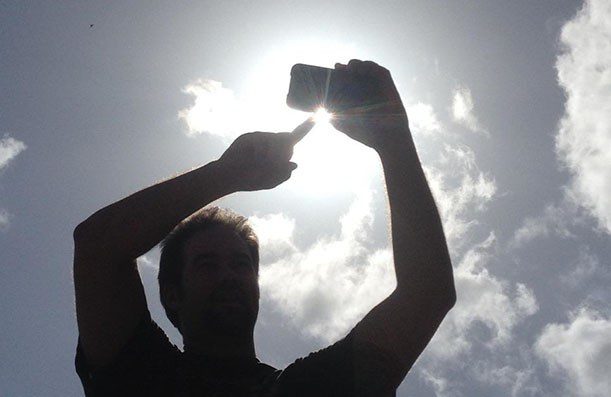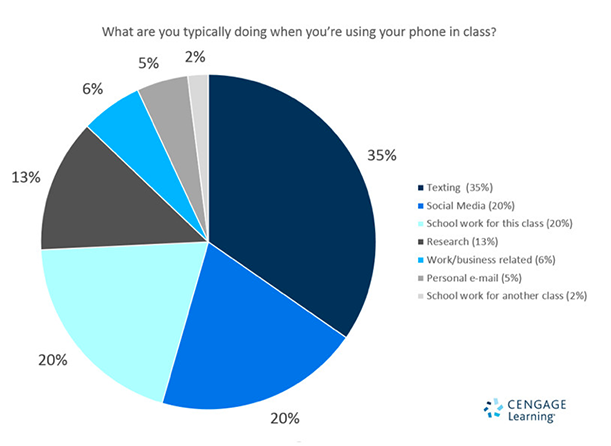By Jonathan Webber, Kapi‘o Staff Writer /
Something is wrong. Something is definitely wrong. Kapi‘olani Community College student “Tristan” looks past the toaster with its charred remains of once-edible bread peering out of the top, and confirms that his laptop is plugged in. Well, the cord seems to be plugged in to the side of the computer, at least. Maybe he just did not push the power button hard enough. Tristan tries to turn on his laptop a second time. No success.
This is a problem: The paper he needs to retrieve and print is due in class today.
A closer inspection reveals the issue. The outlet Tristan plugged the charger’s cord into last night has the GFI test button depressed. He must have accidentally depressed it as he engaged the wall socket. There has been no electricity flowing through the outlet nor the laptop all night. This really could be disastrous for Tristan; he needs to turn in that paper to pass the course. Luckily, he has a smartphone.
Tristan uses the phone to access his cloud, which is where he keeps his school documents. He scans the content until he finds the morning’s necessary document, and downloads it. He turns on the phone’s Wi-Fi, searches for connections, and secures one with his printer. The document is sent and printed, and the morning’s catastrophe is averted. Tristan notes the time and finishes his granola bar with haste.
Document and smartphone in tow, Tristan walks briskly to the alley where he parked the previous night. He arrives at his destination and the morning’s next dilemma. No car. He grits his teeth in anger at himself. Tristan had left his vehicle in an area marked for street sweeping in the morning. Not to worry, though. He consults his smartphone to call for a cab. With no cash on hand — he is, after all, a college student — he opts for the Uber app, which allows his cabbie will receive payment from the credit card Tristan has set up with the account. Second crisis of the day solved.
Tristan uses the duration of the ride to call the tow company and find out the amount needed to get his car back. He then transfers funds from a few accounts, using the secured link provided by a banking app. He’ll deal with the car later, after school. He arrives at his classroom just in time, a minute early actually. He drops the paper on the teachers desk, then drops himself into a seat to await the beginning of class.
Triatan likes to learn as much as possible, and in as many ways as possible, so he connects to the campus’ Wi-Fi and downloads the day’s PowerPoint presentation. While it is being retrieved, he starts the audio recording app, which will allow him to go back and complete the notes and information he misses in class due to his slow, barely legible notetaking. He is trying for a career in medicine, not calligraphy.
The lecture is a particularly good one, and the flowchart on the whiteboard makes the topic even clearer to Tristan. He has other classes to attend, so he ends the recording and snaps a quick picture of the board. He uploads both audio and picture to his cloud as he greets a former coworker he lost touch with last year. They exchange brisk greetings and phone numbers.
While waiting for his next class to begin, Tristan spots a notice. His smartphone has alerted him to a warning from the campus security system. There has been a trespasser reported on campus. Tristan makes a mental note to keep an eye out for the fugitive, then reads his next notice about an expired health document. He has already visited the doctor and obtained the updated card. This he removes from his wallet. He snaps a photo of the front and back then attaches the pictures to the reply email. Updated health documents are sent, and Tristan’s second class begins.
This teacher encourages class participation and a program through which students may respond to multiple-choice question in class. The answers are anonymously tallied and displayed, allowing the teacher to immediately determine how effective his lesson is, and adjust it if need be. Tristan did not want to purchase the clicker required for class participation, so he downloaded the program’s app on his phone. Many of his classmates did the same.
While walking to his next class, a group of Japanese exchange students gets his attention. They seem to need information, and so does Tristan. He’s taking Spanish this year, not Japanese. He opens a translation app on his phone and translates their query into English. He then directs them toward the library, and they enthusiastically thank him.
After completing his classes and dealing with his car fiasco, Tristan has his ride back. He is supposed to meet classmates at an apartment complex he hasn’t been to yet. He inputs the address into his smartphone’s GPS and follows the hands-free directional commands to reach his destination.
Tristan shows his peers the new app he has been using to study anatomy, and suggests they use it as well. It is a flashcard app that allows the user to create and share questions. The study group goes through their textbook’s online exam questions and they each take turns answering them. This method of study has proven to be an effective way to revisit and retain the material they learn in class.
Tristan drives home to get what little sleep he can. He has another full school day in the morning. After carefully parking his car in a legal area, he walks to his apartment. He makes sure the plug he uses to charge his laptop is working, and does the same for his smartphone. He sets the alarm on his phone and drifts off to sleep, wondering how differently his day would have progressed if he had kept his old flip phone.
This depiction of a KCC student’s school day is a work of fiction, but its description of typical smartphone usage is not. Smartphones have become valuable tools that many students use on a daily, if not hourly, basis. The continued development of these handheld computers means a more fluid, functional transfer knowledge from fingertips to mind. Imagine that.


